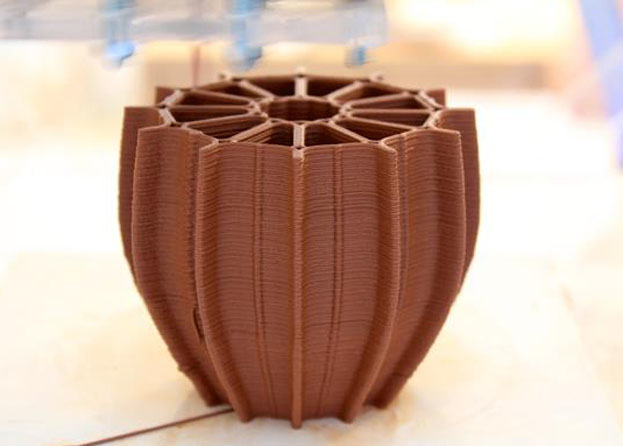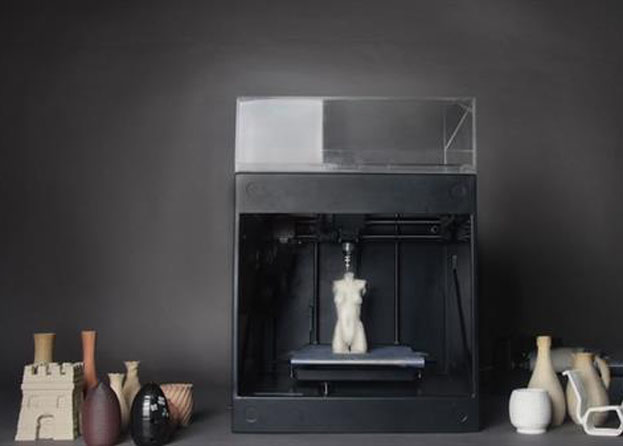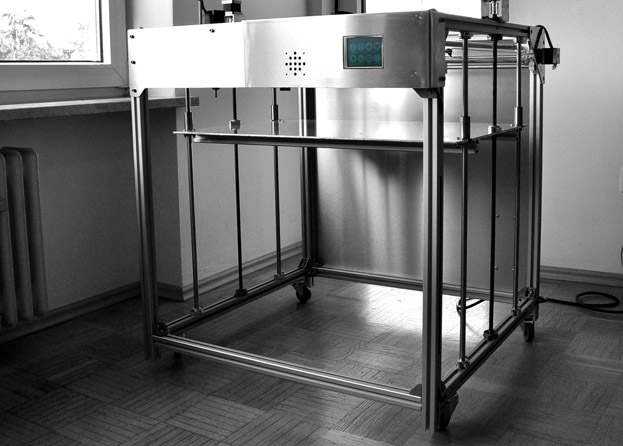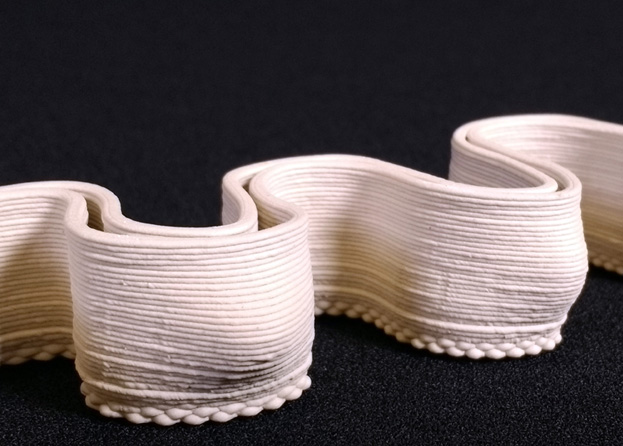Unfold, a design studio based in Antwerp, Belgium, is using “Fluid Dosing & Deposition” (FDD) 3D printing technology from ViscoTec, a German high-viscosity fluids specialist, in order to print artworks in abrasive materials such as ceramics. Several of its creations are currently for sale.
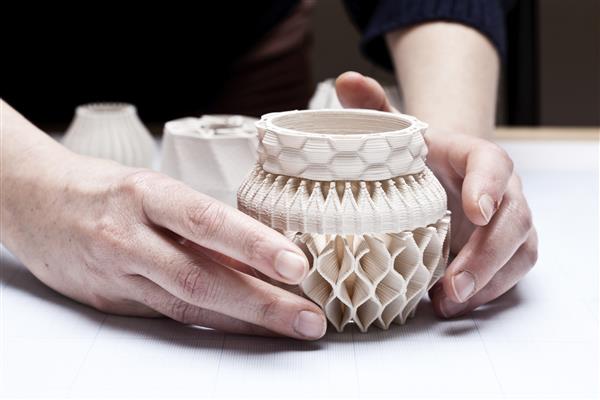
Last August, ViscoTec released its FDD Starter Kit, a 3D printer add-on which enables users to incorporate ViscoTec’s fluid dosing and deposition technology into an existing desktop 3D printer, bypassing the standard hotend of the 3D printer and instead depositing silicones, adhesives, or other viscous materials, one drop at a time, at room temperature. The company’s 3D printing technology has now been adopted by Unfold, an Antwerp-based design duo consisting of Claire Warnier and Dries Verbruggen, both graduates of the Design Academy Eindhoven, who are using the method to create unusual 3D printed ceramic sculptures.
While ViscoTec has previously marketed its technology at both consumer and industrial users of 3D printing technology, Unfold is commandeering the innovative FDD system to create new and exciting artworks. Prior to adopting FDD, Unfold used a time pressure system in a 3D printer, but frequently encountered erratic flow behavior. Inhomogeneous mixed materials and emptying cartridges were two causes of this problem, but neither symptom could be easily fixed. What the duo needed was a new system; a system which did not require constant manual supervision in order to compensate for fluctuations in dosage.
By installing ViscoTec dosing units and adopting the FDD 3D printing method, Unfold was able to massively improve its ceramic 3D printing process, eliminating defects in 3D printed parts and stabilizing the entire procedure. For Unfold, the advantages of FDD were manifest: the dosed volume per revolution is precisely defined, regardless of material properties such as viscosity, or the particle size of the solids. Furthermore, material flow is entirely controlled by the 3D printer software and not by material properties, saving on manual readjustment costs. “With the volumetric system from ViscoTec we don’t need to recalibrate all 3D printing parameters when we change the material”, explained Verbruggen.
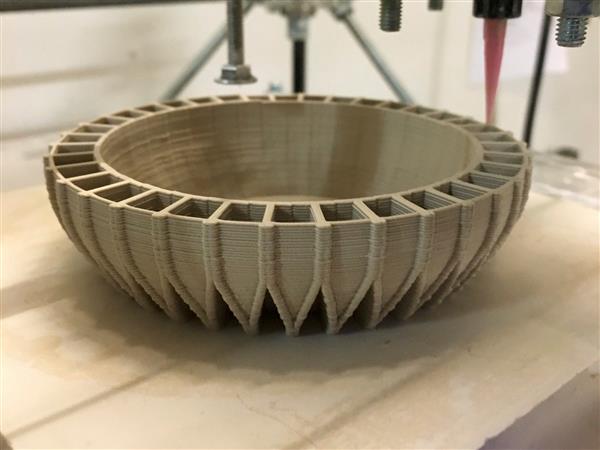
A particularly important feature of ViscoTec’s FDD technology, particularly for Warnier and Verbruggen at Unfold, is its ability to dose highly filled, abrasive media precisely and with a low amount of wear—wear being a common problem for many types of pump. ViscoTec’s “endless piston principle”, based on progressive cavity technology, gently moves abrasive solids through chambers between a rotor and a stator with a low pulsation rate, reducing wear and producing a higher-quality end product.
Using FDD 3D printing technology, Unfold is now able to process ceramics with a solids content of 80%, grain sizes up to 63 µm, and a viscosity of about 250,000 mPas through a 3D printer. The results of this technology speak for themselves: a set of highly detailed, evenly printed ceramic objects that are clearly of the highest quality. Some of the studio’s ceramic 3D printed creations, including Artefacts of a New History, a collection of miniature ceramics in a wooden presentation box, are currently for sale.

